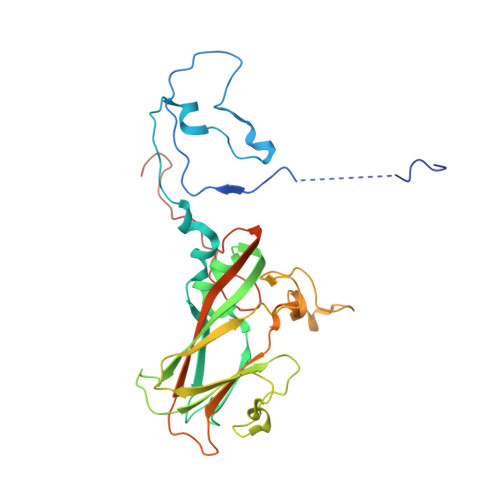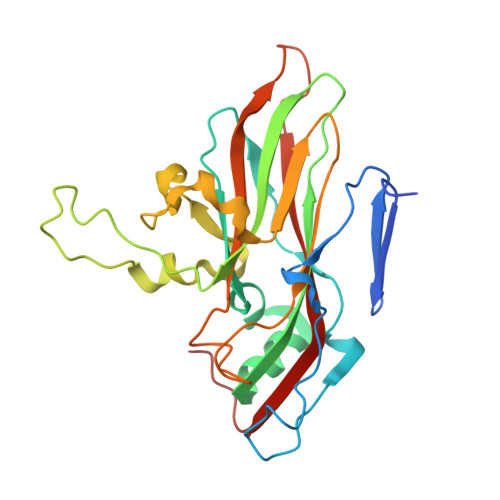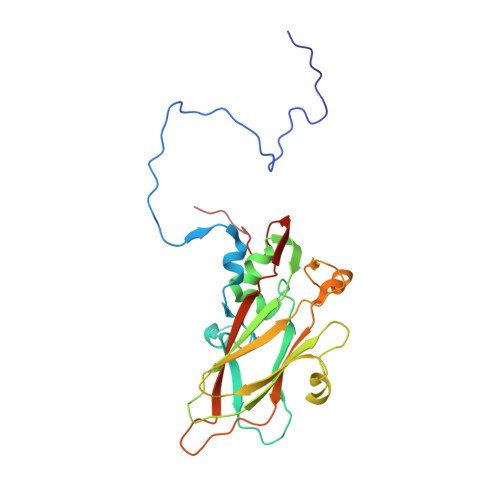Structure Elucidation of Coxsackievirus A16 in Complex with Gpp3 Informs a Systematic Review of Highly Potent Capsid Binders to Enteroviruses.
De Colibus, L., Wang, X., Tijsma, A., Neyts, J., Spyrou, J.A.B., Ren, J., Grimes, J.M., Puerstinger, G., Leyssen, P., Fry, E.E., Rao, Z., Stuart, D.I.(2015) PLoS Pathog 11: 5165
- PubMed: 26485389
- DOI: https://doi.org/10.1371/journal.ppat.1005165
- Primary Citation of Related Structures:
5ABJ - PubMed Abstract:
The replication of enterovirus 71 (EV71) and coxsackievirus A16 (CVA16), which are the major cause of hand, foot and mouth disease (HFMD) in children, can be inhibited by the capsid binder GPP3. Here, we present the crystal structure of CVA16 in complex with GPP3, which clarifies the role of the key residues involved in interactions with the inhibitor. Based on this model, in silico docking was performed to investigate the interactions with the two next-generation capsid binders NLD and ALD, which we show to be potent inhibitors of a panel of enteroviruses with potentially interesting pharmacological properties. A meta-analysis was performed using the available structural information to obtain a deeper insight into those structural features required for capsid binders to interact effectively and also those that confer broad-spectrum anti-enterovirus activity.
Organizational Affiliation:
Division of Structural Biology, University of Oxford, Oxford, United Kingdom.




















